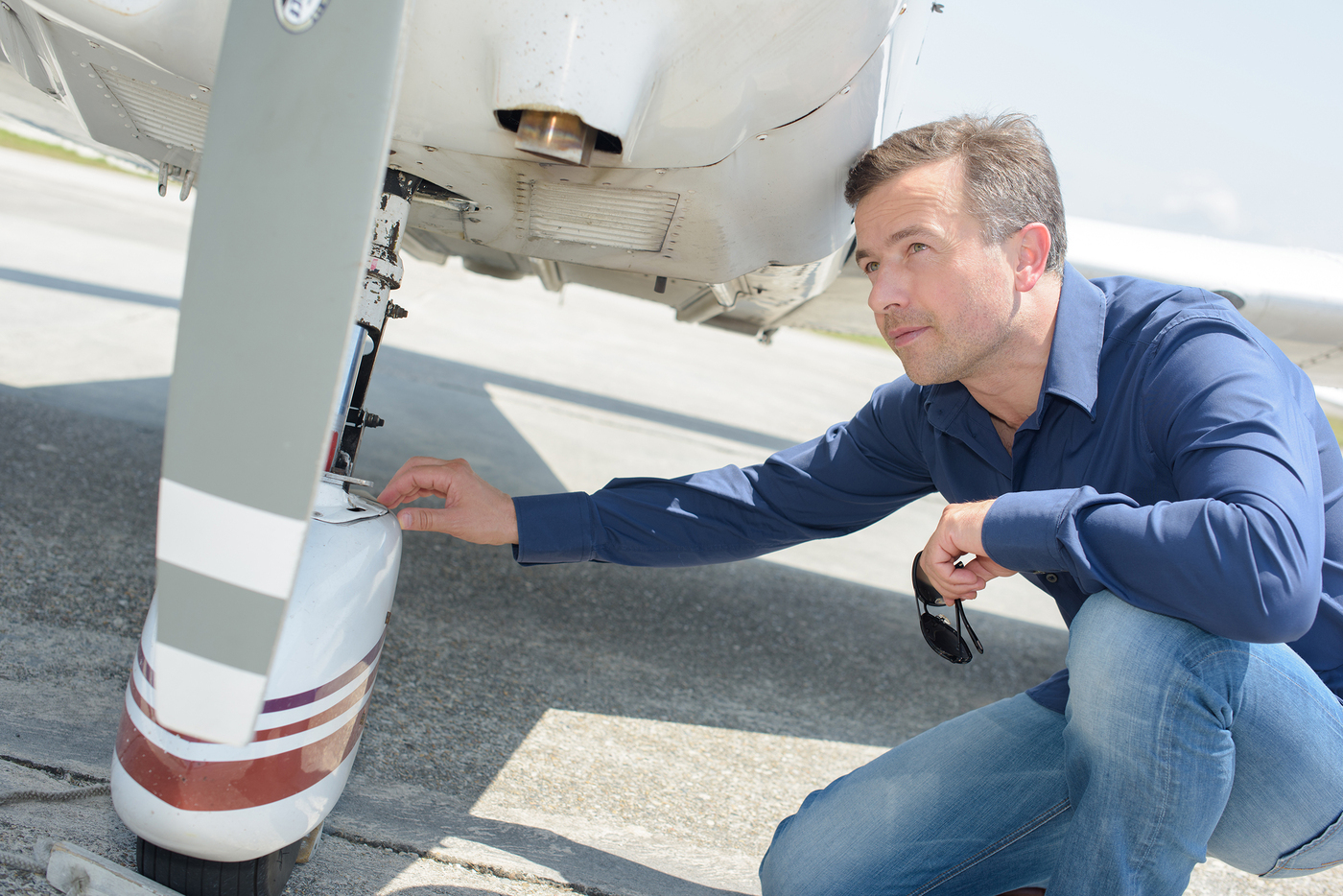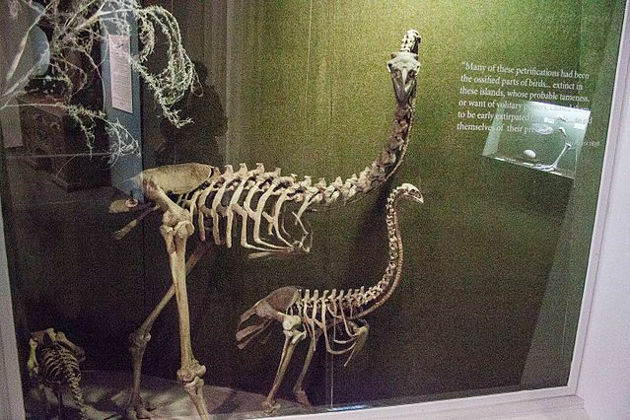Importance of Consistency-Aviation's Most Cost-Effective Safety Tool from Global Aerospace SM4 Aviation Safety Program
Brand Story
10 May 2022, 20:52 GMT+10
Within the aviation community, one of the most basic tasks pilots learn from day one of training is to perform a pre-flight inspection (PFI). The PFI is a visual walk-around of the aircraft to enable the pilot, using sight and touch, to determine the basic condition of the aircraft, systems and functional controls for the purpose of flight.

The PFI provides an action sequence that all pilots learn and then apply to the specific aircraft they intend to fly. Reference to the Pilot's Operating Handbook (POH) provides a graphic of the aircraft and the recommended path to ensure all areas and systems of the aircraft are checked prior to flight. From small, single-engine aircraft and business jets to large, transport-category aircraft, we see this activity performed at FBOs and airport terminals on a daily basis.
Pilots use the PFI and the turnaround check (performed between flights) as cost/time-efficient tools to ensure their aircraft is airworthy and remains so. Any discrepancy identified while on the ground provides the opportunity for a more detailed inspection by a trained mechanic before a flight can continue.
Non-Compliance and Complacency
We've all heard stories of the distracted certified flight instructor (CFI) who, after a hurried switch between students, jumps into the aircraft and allows the student to start up and begin taxiing while the aircraft is still tied down. Or the rushed pilot who failed to observe and remove the installed yoke gust lock or left fuel panels open or unsecured. The stories go on and on, from small aircraft to large business jets and air transport aircraft.
The root cause of the vast majority of these events is procedural non-compliance due in part to distraction,1 poor time management and, yes... complacency.
Performing these most basic yet pivotal checks is an imperative drilled into every pilot's mindset. However, differences between pilots do exist. The way checks are performed is often clouded by the impact and effect of human factors (HF) on that particular pilot, mechanic or line service technician (LST). We all have the tools. The question is, "How well do we apply them?"
From basic pilot instruction to introductory line service training, we are taught the basics of the pre-operational check or walk-around aligned to the mechanical device, aircraft or tow tractor we intend to operate. Once the instruction is provided and competency demonstrated, via a practical exam or OJT, the basics of these checks become something that we will use over the entirety of our career, as a memory item, if the training was appropriately conducted.
- Communicate the task (Understood)
- Check the equipment (Fully operational)
- Check the area (Clear of obstacles and traffic)
- Clear to proceed with ever-present vigilance
Exceeding Minimum Criteria
The industry can, and often does, prescribe exact tasks to be performed and items checked. But when they become routine, these "checks' are often skimmed over. I often say, "Regulations are the minimum criteria and do not guarantee safety." What an operator does over and above regulatory requirements, such as using recognized best practices, is often the result of lessons learned, either directly or, better yet, adopted and promoted by the industry so that all can benefit from someone else's experience.
Recently, an FAA FAASTeam article provided the following passage. From the regulator's point of view, it reflects that they understand the inherent need for operators to explore and dissect their specific operational environment and add/enhance policies, procedures and controls to better manage and mitigate or eliminate hazards from their risk profile.
"Regulations are a minimum standard and may not reflect all of the best practices that a professional operator should follow. Yes, they should follow the rule, but a true professional will go above the minimum standard as a best practice of their routine. Their attention to detail will give you a good indication of their safety culture."2
For those operators required by regulation to maintain a safety management system (SMS) or that do so voluntarily, the tools are before you. Still, the question remains: How effectively implemented and verified are the four components3 within your SMS?
Experience has shown that the answer to this question is more often reflected in a typical bell curve. A percentage (25%) are fully engaged in extracting the maximum benefit of their SMS with an informed workforce. Then comes the majority (50%) who are working to understand it, leaving 25% that are just going through the motions. Their SMS is maintained in conversation only, and they are barely scratching the surface of its benefits.
A Call to Action for Greater Attention to Detail in Aviation
This short article is a call to the industry to pause and actually reflect on the quality of the task performed, from the pre-flight inspection, to the walk-around prior to pushback, to the quality of hazard/concern data received via your SMS reporting tool. When we examine the alarming number and extent of ground damage incidents occurring in 2021 alone, pause is required!
Due in part to staffing issues occasioned by the continuing influence of the COVID pandemic on our workforce, it seems that distraction, poor time management and complacency are alive and well.
Taking a lesson from the distracted CFI, we need to encourage deliberate, aware leadership to change the course of our loss experience. So, take advantage of the most basic and cost-effective safety/loss prevention tool and ensure the pre-checks and walk-arounds are being conducted with eyes wide open.
When you take the time to look, you'll be amazed at what you see.
Resources
1 No 1 on the NTSB's Most Wanted List.
2 FAA FAASTeam May 14, 2021.
3 ICAO Document 9859: Chapter 9. Components of ICAO SMS: Safety policy and objectives; Safety risk management; Safety assurance; and Safety promotion.
About Global Aerospace SM4 Aviation Safety ProgramThe Global Aerospace SM4 Safety Program has revolutionized the way insurance specialists help their clients achieve higher levels of operational safety. SM4 was built on the concept of integrating four critical safety components: planning, prevention, response and recovery. Its mission is to help organizations manage risk, enrich training efforts, strengthen safety culture and improve safety management systems. https://sm4.global-aero.com/
Global Aerospace SM4 Aviation Safety Program Media Contact Suzanne Keneally
Vice President, Group Head of Communications
+1 973-490-8588
This content is published on behalf of the above source. Please contact them directly for any concern related to the above.
 Share
Share
 Tweet
Tweet
 Share
Share
 Flip
Flip
 Email
Email
Watch latest videos
Subscribe and Follow
Get a daily dose of Chicago Chronicle news through our daily email, its complimentary and keeps you fully up to date with world and business news as well.
News RELEASES
Publish news of your business, community or sports group, personnel appointments, major event and more by submitting a news release to Chicago Chronicle.
More InformationBusiness
SectionBitcoin soars to a record on Trump policies, institutional demand
NEW YORK CITY, New York: Bitcoin surged to a new all-time high this week, buoyed by growing institutional interest and a wave of pro-crypto...
Huawei eyes new buyers for AI chips amid U.S. export curbs
SHENZHEN, China: As global chip competition intensifies, Huawei Technologies is exploring new markets in the Middle East and Southeast...
U.S. food prices at risk as Brazil tariff hits key imports
LONDON/NEW YORK CITY: American grocery bills may be headed higher as coffee and orange juice prices face upward pressure from new tariffs...
WK Kellogg sold to Ferrero as food giants chase shelf power
BATTLE CREEK, Michigan: In a major consolidation of iconic food brands, WK Kellogg has agreed to be acquired by the owner of Ferrero...
Filmmaker joins biotech effort to bring back extinct giant bird
WASHINGTON, D.C.: Filmmaker Peter Jackson's lifelong fascination with the extinct giant New Zealand flightless bird called the moa...
India seeks WTO nod for retaliatory tariffs on US
NEW DELHI, India: India has submitted a revised proposal to the World Trade Organization (WTO) in Geneva to implement retaliatory tariffs...
Illinois
SectionRubio impersonator used AI to reach officials via Signal: cable
WASHINGTON, D.C.: An elaborate impersonation scheme involving artificial intelligence targeted senior U.S. and foreign officials in...
Shohei Ohtani (NL), Gleyber Torres (AL) to lead off in All-Star Game
(Photo credit: Darren Yamashita-Imagn Images) The American League and National League announced their lineups for Tuesday's All-Star...
NHL season begins with tripleheader on Oct. 7
(Photo credit: James Guillory-Imagn Images) Longtime Pittsburgh Penguins coach Mike Sullivan will make his debut behind the New York...
MLB roundup: Red Sox top Rays to extend win streak to 10
(Photo credit: Brian Fluharty-Imagn Images) Ceddanne Rafaela hit a two-run home run to help the Boston Red Sox stretch their winning...
Shane van Gisbergen tames Sonoma course for triumph
(Photo credit: Stan Szeto-Imagn Images) For the third time in five races, Shane van Gisbergen leveled the field at a NASCAR Cup Series...
Guardians rally to defeat White Sox in extra innings
(Photo credit: David Banks-Imagn Images) Steven Kwan hit a go-ahead sacrifice fly in the 10th inning as the Cleveland Guardians rallied...













